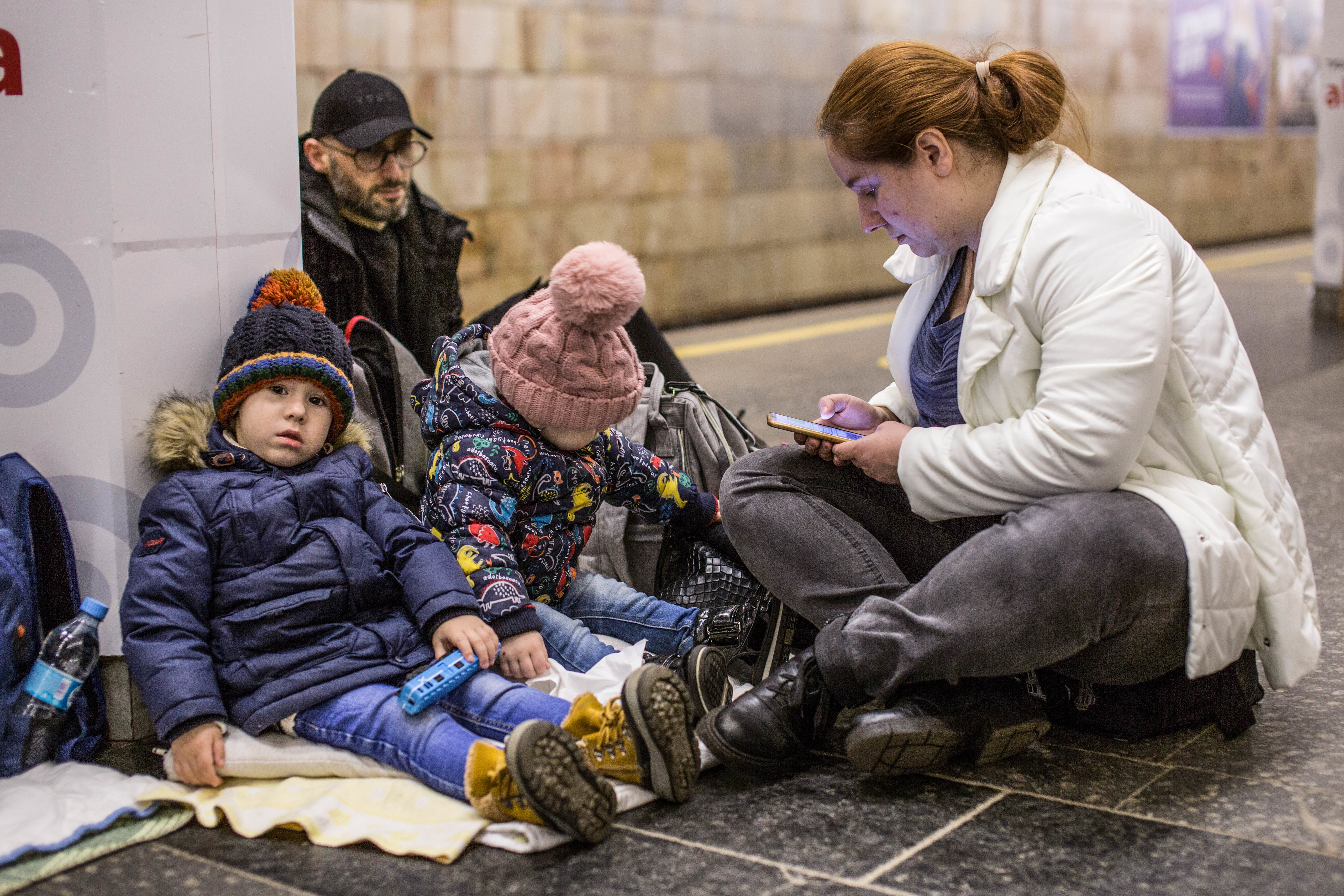How we can address the crisis of internal displacement
Developing a way home
June 24, 2022

While millions of Ukrainians fleeing the war have taken refuge in neighbouring countries, another 7 million have been displaced within the country. Globally, the number of internally displaced people has doubled over the past decade, driven by conflict, climate change and extreme poverty.
“I never thought it could happen to me.”
It’s a sentiment expressed by many when crisis forces them to flee.
And why not? We all deserve to rest easy. We all deserve to belong. A sense of safety and stability is a basic human right. It is fundamental to our concept of home.
But in this moment, when a record of more than 100 million people have had to abandon their homes due to events ranging from armed conflict and sectarian violence to climate change and extreme weather, it is time to acknowledge – forced displacement can happen to anyone.
It is time to develop a new approach to displacement. One based in prevention, protection and long-term solutions.
Of the unprecedented number forced to flee, 59.1 million people were displaced within their own countries at the end of 2021, resulting in an economic cost of over US$21 billion that year. And these sobering figures do not include the impact of the war in Ukraine – where more than 7 million people have been displaced within the country in less than five months.
Unlike refugees, internally displaced people have not crossed a border to find safety. They remain within their own countries, under the protection of the governments that were often the cause of their displacement.
They are among the most vulnerable people in the world.
They can be in areas where it is difficult for the international community to reach them with help. The assistance they receive is mostly about saving and not rebuilding lives. They are often uprooted multiple times and live in protracted displacement for years or even decades.
It’s been called a crisis hiding in plain sight and its long overdue for our attention. But more than that, the moment demands action.
The numbers are rising. Internal displacement has doubled over the past decade, disproportionately affecting women, children and marginalized groups. And the causes are expanding. As drought, extreme temperatures, floods, storms and wildfires multiply, the World Bank estimates upwards of 216 million people could be forced to move internally by 2050.
Today, acute threats to peace and stability are more widespread than any time in modern history. In our connected global system, nothing can shield us from the cascading impacts of climate change, conflict, food insecurity and extreme poverty. As these events uproot millions, they simultaneously weaken the host communities to which displaced people turn.
It’s an untenable cycle playing out in every corner of the world. Whether by violent conflict in Ukraine, political unrest in Myanmar or extreme weather in Bangladesh, displaced populations and overstretched communities create calamitous results for people and planet.
These rising stakes are at the heart of the Secretary-General’s Action Agenda on Internal Displacement, which is released today.
The Secretary-General and UN agencies are calling for sustainable approaches that will create new ways for people to return home, integrate locally or settle elsewhere.
Crucially the Agenda calls for more resources to be invested in development.
Lasting results demand the local systems, skills, infrastructure and institutions needed to prevent displacement, protect those on the move and offer an end to protracted crises.
States must not only restore the rights of displaced people as citizens but - just as crucially – their respect as human beings. Displaced people need a new social contract that enables them to play a full part in society.
And while the Agenda places national and local authorities in the lead – stressing the responsibility of sovereignty - the international community still has a powerful role to play through resource mobilization, knowledge sharing and strengthening of institutions to facilitate such lasting solutions.
As part of UN system-wide efforts, UNDP is working with national governments and local partners to create new pathways out of displacement. These efforts include increased funding for data integration and analysis, scaling up our gender-responsive programming, enhancing our support to local partners through the UN’s system of Resident and Humanitarian Coordinators, and accessing new levels of development financing. In Iraq, for example, UNDP's support to the government together with partners has enabled the return of 4.6 million people. In Ukraine, UNDP has worked with the government in creating a new public digital online service for IDP registration which allows for easier access to monthly support.
If crisis hits, our concept of home can come under threat. But our right to it – to the peace and belonging it represents - is universal.
For the millions currently displaced and the countless more who live in the shadow of crisis, we must work together to develop a safe, stable and secure way for them to re-establish their sense of home.
"It’s been called a crisis hiding in plain sight and its long overdue for our attention. But more than that, the moment demands action."

 Locations
Locations